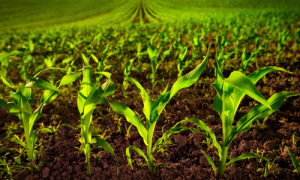Berg Insight
How the Adoption of IoT Solutions Leads the Way to More Sustainable Farming

The challenging future of food
According to the Food and Agriculture Organization (FAO) of the United Nations, the global population is expected to balloon to almost 10 billion people by 2050 and may peak at more than 11 billion by the end of the century – compared to 7.9 billion today – increasing demand for food production by at least 50%.
This surge in demand, along with changing consumption patterns and habits will require dramatically more efficient food production and distribution capacities, ratcheting up the pressure on the entire agribusiness chain – especially on farmers, growers and breeders.
The promising role of IoT
Smart-agriculture systems enabled by the Internet of Things (IoT) are already providing producers with critical data and operational management support so they can better understand and more efficiently respond to day-to-day developments.
However, in its paper “How the Adoption of IoT Solutions Leads the Way to More Sustainable Farming”1, Berg Insight states that “the agricultural sector is significantly underpenetrated by IoT solutions but set to experience a wave of technology adoption” and that “adoption of smart farming solutions is expected to drive growth in crop yield in the medium to long-term”.
“Since the 1960s, production of agricultural crops has grown by an average of 1-3 percent annually, while the planted area has grown by less than 1 percent per year. As a result, the world is using almost 70 percent less land to produce the same amount of food.”
The hybridity of wireless connectivity
Berg Insight details how “for data transmission, 802.15.4-based network technologies are currently typically used for dairy cow monitoring applications, cellular communications for vehicle telematics solutions, while in-field sensor systems utilize a mix of cellular, LPWA and short-range wireless technologies”.
The analytics firm further explains that “among the network technologies, LPWA technologies are expected to achieve the highest growth rate and realize a significant market position in the remote monitoring and control segment”. As a result, “LoRa and cellular LPWA technologies are gaining traction in application areas like dairy herd management, irrigation management and environmental monitoring”.
Leaders’ digest
We believe manufacturers of agricultural equipment, providers of precision farming solutions, experts of remote monitoring applications and designers of dedicated connected devices will find in this paper key data and insights to learn more about IoT’s contribution to agriculture. Especially:
- Understanding global agriculture in numbers and key trends of the agricultural sector, including the forecasted deployment of wireless IoT devices in the coming years,
- Identifying major smart farming applications and the wide range of sensing solutions,
- Realizing how data-driven decision making can boost crop yield and optimize machinery uptime,
- Anticipating which advanced technologies can enable far greater precision in agricultural tasks.
1 Berg Insight, “How the Adoption of IoT Solutions Leads the Way to More Sustainable Farming”, By Fredrik Stålbrand, September 2022.
Berg Insight Disclaimer:
Berg Insight is an independent producer of market analysis, and this Berg Insight product is the result of objective research by Berg Insight staff at the time of data collection. The opinions of Berg Insight and its analysts on any subject are continuously revised based on the most current data available. The information contained herein has been obtained from sources believed to be reliable. Berg Insight disclaims all warranties, express or implied, with respect to this research, including any warranties of merchantability or fitness for a particular purpose.
Berg Insight is a trademark of Berg Insight AB and is used herein with permission. All rights reserved.


